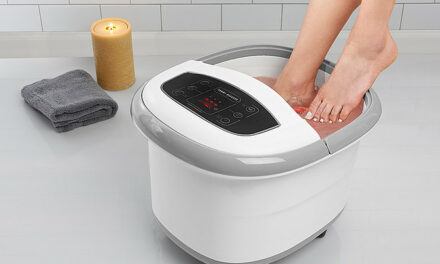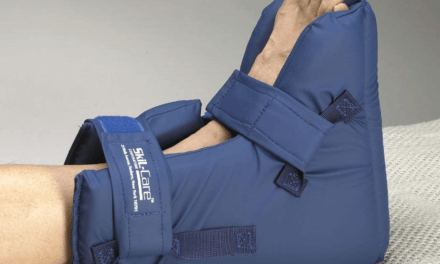Can you imagine your grandma in the kitchen or dining room, struggling with no success to keep food on her plate or even get food on her spoon? This where lipped plates for the elderly and disabled can come in handy.
Yes, can you imagine the trauma or disability of a young child who is physically challenged might be passing through, due to his inability to eat like his peers? He or she might even prefer to starve and become anorexic, rather than go through the stress of eating. The lipped plates can be the solution he or she after too.
I’m positive that none of these scenarios paint a pretty picture, and if you are like me, you’re already thinking up ways to make mealtime easier for anyone you know in similar situations.
Well, you don’t need to think too far because there is good news for you now. Guess what? Special cutlery has been made available for these special people. And, our focus today would be that, on the lipped plate, also known as the inner-lip plate.
What Are Lipped Plates?
Lipped plates, or inner-lip plates, are just like any normal plate. The major distinction, however, is the upward-outward protrusion (lip), which make the plates seem deeper and the edges higher than the standard plates.
These plates are made especially for individuals, who would normally find it difficult to push food onto their spoon or fork, or even keep food on their plates.
It is specifically designed for use by
- The elderly,
- Those with limited muscle control (Alzheimer’s disease or Parkinson’s patients),
- Individuals with use of just one hand or arm,
- Young children, and
- Those with limited or no vision (visually impaired).
Due to the inside lip and extended rim around the edges, the lipped plate keeps food from sliding off the plate as the protrusion serves as a guard.
When using the lipped plate, the individual brings the fork or spoon to the edge of the plate, then pushes the food onto the utensil.
Most lipped plates are made with durable plastics and are dishwasher, microwave and autoclave safe. They are also fitted with a rubber base to confer on them and anti-slip property. This means that the lipped plates not only prevent food from slipping out, they also prevent the plate from sliding off the table.
Aren’t they just amazing? Eating would definitely be easier for anyone with these plates. Anyone may get one for themselves.
Now, let’s turn on to the types of lipped plates.
Tip: Here’s our Heated Slippers for Elderly Selection Guide.
Types Of Lipped Plates
There are several types of lipped plates, and each varies with the company that produces them.
1. Inner-lip plate with suction cups
This is a lipped plate produced by Maddak SP Ableware.
The plates come with suction cups beneath them, which are attached to poles protruding from the plate edges. The essence of the suction cups is to prevent the plate from sliding off the table while in use.
The attachment of suction cups to these plates makes it highly beneficial to individuals with the use of only one arm. This is because, the one arm can be used to hold the cutlery, without fear of the plate falling off the table. See, eating made easier.
2. Normal inner-lip plate
This lipped plate looks like any standard plate for eating. What makes it different is the depth and the high-rim of the edges.
This plate is better for individuals who have difficulty getting food onto their cutlery, but have no issue holding the plate, such as the elderly. So, with one hand, the user can get their food onto the cutlery (spoon, fork or knife) using the lip of the plate as a support; while with the other hand, the user can hold on to the plate. This gives a semblance of normality during meal time, and also attracts less attention to the user, should guests be present.
These plates can be purchased on Amazon.
3. Inner-lip plates with rubber base
Some of the lipped plates found in the market come with a rubber base, rather than suction cups.
The rubber base helps to keep the plate firmly in position and prevent it from sliding, while being used. The rubber base is usually not noticeable as it is fitted to the base and made in the same colour as the rest of the plate.
What makes this a bit better than the inner-lip plate with suction cups is that where the suction cups are easily seen and can draw attention to the user, the rubber base is nearly invisible and as such, does not attract attention.
4. Inner-lip plates with no non-slip base
While some lipped plates come with non-slip bases, there are still a few which do not. They have every other feature of a lipped plate- the depth, high rimmed nature, except the non-slip characteristic. This does not mean they can not be used, though.
All the user/care giver has to do is place a non-slip mat instead of a regular table mat beneath the plate. This way, the individual gets to enjoy the benefits of using a lipped plate, including the non-slip feature.
5. Sectioned lipped plates
These plates have the high-rim feature of the other lip plates. They are also deep, but what makes them stand out is the fact that they are sectioned into three/four parts.
They also come with rubber bases too, to give them the “much desired” non-slip property. The sectioning of the plates makes it easier for the visually impaired to enjoy their meals independently and fashionably. The caregiver would only need to explain to them the contents of each section and the position.
With all the variations of the inner-lip plates explained above, one might get confused about which one to use. The solution is quite simple.
Each plate is made to suit the needs of the user, while giving a semblance of normality at meal times. All you need to do is understand the challenges the intended user faces, and select any of the options above which seem like the right solution.
For example, an individual with muscle tremors cannot be given the normal lipped plate, except there is a non-slip mat beneath it. The best option would be either the plate with suction cups, or one with a rubber base.
Lipped Plates Vs Adaptive Plates – What Is The Difference?
Are there any differences between lipped plates and adaptive plates? I was a bit confused at first too, because they are all generalized as adaptive plates. However, some differences exist between the lipped plates and other adaptive plates.
|
S/N |
Lipped plate |
Adaptive plate |
|
1. |
It mostly comes with a non-slip base. |
The non-slip base comes separately, for example, the scooper plate. |
|
2. |
The edges are high-rimmed all round. |
They are not high-rimmed, but some are one-sided high rims. |
|
3. |
The plates are deep, but less deep than other adaptive plates. |
The plates are very deep, deeper than the lipped plates. |
|
4. |
The lipped plates bear a semblance to the standard eating plate. |
It is quite obvious that the plate is made for special uses. |
|
5. |
Extended lips allow the user to grasp it firmly when necessary. |
Only a few have lips, and even then, it’s on one side. They are mostly used with guards or bumpers. |
Uses Of Lipped Plates
The inner-lip plates can be used for various reasons, depending on the individual using them.
1. To prevent spilling food during meals
One of the major reasons for using the lipped plate is to prevent food spillage while the individual is eating.
The food spillage could be as a result of muscle tremors or even visual impairment, which makes it difficult for the individual to control their cutlery while eating.
The inner-lip of these lipped plates serve as a guard around the plates. For this reason, food cannot spill out of the plate as easily as it can without it.
The high-rimmed edges as a result of this lip protrusion and the resulting depth of the plate, also make it easier for the individual to keep their food in their plate. This keeps the dining area almost ‘mess free’.
2. To assist the individual in getting food on their cutlery
Another major reason why the lipped plate is used is to assist the individual in picking food with their cutlery. Thanks to the high-rimmed edges of the plate, all the user needs to do while eating is to push the food to the edge of the plate with the cutlery, then use the edge as a support and push the food up onto the cutlery.
Now imagine doing this with a standard eating plate? You’ll be picking the food off the dining table.
3. To assist physically challenged individuals to keep their plates in position
The non-slip feature of the lipped plates is a big part of the reason why several individuals with use of one arm, would prefer to buy them over any other adaptive plate.
The rubber base or suction cups prevent the plate from sliding off the table while the user is eating. This leaves the user free to eat as comfortably as possible, without having to worry about their plate falling to the floor.
Tip: Here’s our Guide to Mobility, Daily Living and Walking Aid Options for Elderly and Disabled.
Benefits Of Using Lipped Plates
There are certain benefits to be derived from using lipped plates, and they include the following.
1. Use of lipped plates make eating less stressful
Can you even imagine how stressful it would be for someone who can only use one arm to have a meal?
With the use of the lipped plates, especially those with a non-slip base, eating is made less stressful for them. Now, meals can be taken even in public, without worry or fear of embarrassment.
By making eating less stressful, using lipped plates help prevent anorexia. How? Due to the stress caused by trying to eat with standard dining ware, a lot of physically challenged would prefer to do without eating, rather than go through the stress that comes with it. Now that eating is less stressful, they would be more encouraged to eat.
2. Eating is more enjoyable with the use of lipped plates
I particularly enjoy eating while doing other stuff like watching movies or reading a book. I find it boring to focus solely on my meal with nothing else to do. Now, if I had to keep an eye on my plate for fear that it might fall off the table, or even struggle to get food on my cutlery, I doubt I would be able to do anything else while eating.
But with the use of the inner-lip plates, I can afford to eat comfortably and still enjoy a good movie or conversation. It makes my meal time so much more fun than if I had to be so meticulous about eating. Thank you, innovation!
3. It enables individuals to eat independently
Where I come from, the men are so proud that they would rather die, than have to depend on anyone to take care of them, especially to feed them.
By introducing your grandparents to the lipped plates, they can feed themselves conveniently and independently. It would make them feel more comfortable about eating and staying alive longer.
4. It helps the individual maintain some level of dignity
There is no human on earth who enjoys being embarrassed or made fun of, whether young or old. That being said, using standard dining ware is challenging for the disabled and elderly, and it could get even worse in the presence of guests or in public.
With specialized dining ware like the lipped plate, the physically challenged and elderly can eat comfortably no matter the location. This way, they do not have to be fed, nor would they make a mess during meals. They can easily maintain their dignity and pride, rather than suffer from a low self-esteem due to their challenges.
When To Decide If To Use Lipped Plates For Disabled, Elderly And Seniors?
You’ve seen the lipped plates, read about the various types, and you know the benefits of using them. When do you decide it’s time to make the purchase? I would advise you to be careful how you go about this.
The physically challenged and elderly can be quite sensitive about their shortcomings. If the issue is not properly handled, you might hurt their feelings.
So, here’s my advice to you: before purchasing, explain to them nicely how special they are and the reason they need to use special plates for their meals.
Do not make them feel like they are burdens because of the mess they make. When making the purchase, try to get colors they fancy to make the plates more appealing to them.
You could even give them as gifts so it would make a better impression on them.
To cut to the chase, when do you decide that it’s time to get the lipped plates?
- For the elderly, as soon as you begin to notice that they are having a hard time keeping food on their plates or getting food on their cutlery as a result of weak muscles, then you know it’s time.
- For the disabled, as soon as the disability occurs or is diagnosed, it is time to get those lipped plates.
Take note that brighter colors like red, are better suited to visually impaired individuals. It makes the plate easier for them to identify.
Tip: Here’s our Guide to Pressure Ulcer Prevention Products for Elderly and Bed-ridden Patients
Other Useful Eating Aids For Aged And Disabled
You may be wondering if the lipped plates are the only eating aids available for the aged and disabled. You could also be wondering how an individual suffering from muscle tremors could hold a spoon up to their mouth, even if they succeed in getting food on the spoon.
Here are some categories of assistive eating devices for the physically challenged and elderly.
1. Adapted Dinnerware
Adaptive plates
and bowls are specially designed dinnerware to make eating easier for the aged and disabled. Using these plates and bowls reduces the amount of effort it takes the individual(s) to gather and consume their food.
Most times, they have difficulty making food stay on the plate; the plates and bowls could even slide around since there is no non-slip base; and the food gets mixed up within the plate. All of these problems can be solved with the use of adaptive dinnerware such as scooper bowls, plate guards and plate bumpers.
Scooper bowls have partial lips around the rim to prevent food from sliding off from one corner of the bowl. Not only that, a wide variety of bumpers, guards, and lips are available that slip or clip onto nearly any type of plate to perform the same function as the scooper plates.
Apart from plates and bowls, cutlery such as spoons, fork and knife have also been adapted to suit “special” needs.
Some utensils are inclined at an angle (left or right, depending on the user’s preference) to aid in hand-to-mouth food delivery for individuals with limited wrist extensions. Adapted cups such as the “nosey cup” also exist to enable individuals with poor or no shoulder flexion, wrist extension, head or neck movement to take drinks without stress.
2. Non-Skid Plates and Bowls
A very good alternative or addition (if you prefer) to the scoopers and plate guards are non-skid plates that aid the user in keeping their plates and bowls from moving under the force of their eating utensils.
Several products such as non-skid mats, suction bases (which could be in the form of cups), and gripper feet are available to be used as bases in the event that the plates and bowls are not non-skid.
The mats and gripper feet provide a good margin of safety, comes with a very “grippy” (but not at all sticky) non-slip material to keep sliding plates and bowls to a minimum. If hand tremors are an issue, the only true way to actually adhere a plate or bowl to a table is suction-based bowls and plates that will not move at all.
3. Weighted Utensils
Weighted utensils are of great importance if the consumer has complications such as hand tremors. Weighted utensils – knives, forks, and spoons are available which aid in holding trembling hands steady during meals.
Just in case there are difficulties getting one, the individual’s personal set of utensils could be inserted into weighted holders, and used instead of getting an entirely new set of utensils.
4. Utensil Holders for Better Grip
Utensils can be hard to grip for any period of time. To solve this problem and make eating easier for individuals with poor grip on spoons, knives and forks, several clips, cuffs and straps have been made to provide a firmer grip.
Most of these utensil holders are so efficient that no finger strength at all is needed; the hand and the holder alone do the work.
For people who can hold utensils but have a problem with grip, foam handles could be inserted to “fatten up” the handles to provide a sure grip. There are also ergonomically-shaped plastic holders that easily slip on and off. All clips, straps, and holders are so portable and easy to manage that they can be taken on the road and used with restaurant utensils.
5. Specialized and Automated Feeding Devices
Specialized and automated feeding devices aid consumers with complex needs in their journey to become independent eaters. With just a simple movement, these feeding devices provide clean, convenient, independent eating.
These devices provide solutions for complex challenges related to self-feeding caused by motor problems.
For people with limited arm function, dynamic arm support feeding devices are often successful. In the case of muscle coordination problems, the use of a mechanical arm that reduces the effects of tremor is quite common.
Conclusion
Eating is not only a necessity for life to go on, it is also meant to be enjoyable. There is no reason why anyone, physically challenged or not, should go through stress just to take a meal.
If you or your loved one begins to have difficulty eating, probably due to tremors or something else, then consult your physician for diagnosis and better recommendation of what type of assistive device would be best suited for your conclusion.
However, if you already have a diagnosis, or an elderly person in your care who is having trouble keeping meals from spilling, then you should hurry up right now and make purchase.










